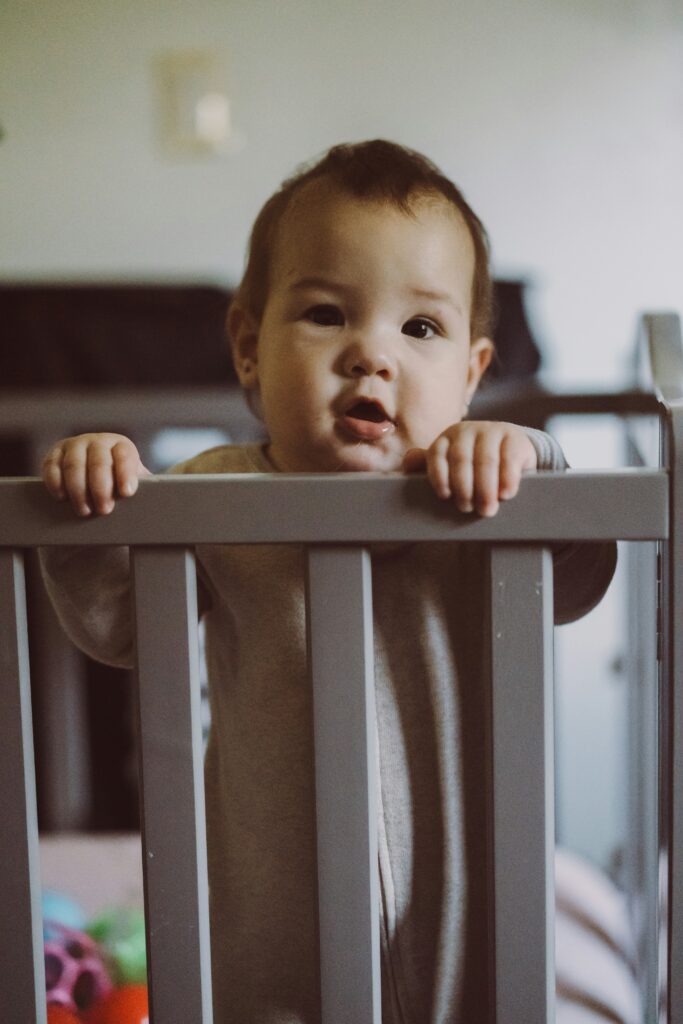
One of the most crucial steps in babyproofing a home is installing a baby gate for stairs. Stairs can pose a serious risk to babies and toddlers as they begin to crawl and explore. But parents often wonder, when is the right time to install a stair baby gate, and equally important, when should it be removed?
This blog will guide you through understanding the appropriate age to install and remove stair gates, why timing matters, how to evaluate your child’s developmental stage, and what safety standards to consider throughout the process.
Why Are Stair Gates Necessary?
The Centers for Disease Control and Prevention (CDC) reports that falls are the leading cause of non-fatal injuries in children under 5. Stairs, in particular, are a major source of risk. A child’s natural curiosity, lack of coordination, and limited understanding of danger make staircases hazardous environments.
Baby gates help prevent:
- Falls down stairs
- Unsupervised access to upper floors or basements
- Entry into unsafe areas with sharp corners or heavy objects
Installing a gate early can make your home significantly safer, giving you peace of mind as your baby starts to move independently.
When Should You Install a Stair Baby Gate?
Ideal Age for Installation: Around 6 to 8 Months
You should install stair gates before your baby becomes mobile, which is usually between 6 and 8 months. Most babies begin to crawl during this time, and once they start, they move quickly and unpredictably.
Even if your baby isn’t crawling yet, installing the gate early helps:
- Get your baby used to its presence
- Allow you time to test gate strength and fit
- Reduce the stress of last-minute babyproofing
Don’t Wait Until They Can Climb
By the time a baby learns to pull themselves up or walk usually around 9 to 12 months they may already be strong and curious enough to explore stairs. Installing the gate after they’ve become mobile increases the risk of accidents.
Which Areas Need a Baby Gate?
Not every home is the same, but staircases almost always need two gates:
Top of the Stairs: Use a hardware-mounted gate only. These screw directly into the wall and provide the most reliable protection against falls.
Bottom of the Stairs: You can use either a pressure-mounted or hardware-mounted gate, depending on your staircase structure.
Other areas to consider:
- Kitchen entrances
- Laundry room doors
- Hallways leading to hazardous rooms
When Should You Remove a Stair Baby Gate?
Just as installing a gate too late can pose risks, leaving it up too long may also be a hazard.
Recommended Age to Remove: Between 2 to 3 Years Old
Most children develop the coordination and understanding of stair safety between the ages of 2 and 3. However, this is not a hard rule, it depends on your child’s development and behavior.
Signs it may be time to remove the gate:
- Your child can open or climb over the gate independently
- They can safely go up and down stairs under supervision
- They understand verbal safety instructions
- The gate no longer provides a physical or psychological barrier
When to Keep the Gate Longer
- If you have multiple children and a younger sibling still needs protection
- If the stairs are particularly steep or hard to navigate
- If your child is overly curious or has poor coordination
Safety Considerations as Your Child Grows
A baby gate that once protected your crawling infant may become a climbing hazard for your toddler. If a child starts trying to climb over the gate, it may increase the risk of injury. At that point, you should either:
- Teach safe stair navigation with supervision
- Remove the gate altogether
- Replace it with a higher gate if needed for younger siblings
Training Your Child for Life Without a Gate
Transitioning away from stair gates doesn’t mean removing them suddenly. It’s best to prepare your child gradually with supervised stair use.
Tips for Transitioning
Practice Going Up and Down: Hold their hand and demonstrate proper stair use.
Use Non-Slip Mats: Install grip tape or rubber treads to prevent slipping.
Teach Safety Rules: Like holding the railing and going one step at a time.
Monitor Closely: Stay nearby during the first few weeks without the gate.
Alternatives After Gate Removal
If you’re still concerned about safety but feel your child is ready for stair independence, consider these alternatives:
- Stair rails or guards: Ensure stair railings are child-safe and closely spaced
- Install safety lighting: Use nightlights near staircases
- Secure rugs and mats: Avoid tripping hazards near stairs
Tips for Choosing the Right Baby Gate
When installing a gate especially at the top of the stairs always prioritize safety, strength, and stability. Here’s what to look for:
- Type: Always use hardware-mounted gates at stair tops
- Height: Choose a gate at least 22 inches tall
- Certifications: Look for gates that meet ASTM or JPMA safety standards
- Bar Spacing: Ensure bars are close enough to prevent head entrapment
- Open/Close Mechanism: Test it to make sure adults can use it easily, but not children
Common Mistakes to Avoid
- Waiting too long to install: This increases fall risk
- Using a pressure gate at stair tops: These can dislodge easily
- Leaving gaps under or around the gate: Children can crawl through small openings
- Not checking for wear and tear: Old or damaged gates lose effectiveness
- Assuming one gate works forever: What works for a crawler may not work for a climber
Conclusion: Safety First, Always
Knowing when to install and remove a stair baby gate can make a world of difference in preventing accidents at home. Ideally, install a gate by the time your baby is 6–8 months old and remove it when your child is between 2–3 years old and consistently demonstrates safe stair use.
Always evaluate your child’s individual development and home environment. Safety decisions should be based not just on age, but also on behavior, ability, and household structure.
By staying alert and proactive, you’ll ensure that your home remains a safe and secure space as your child grows and explores.


